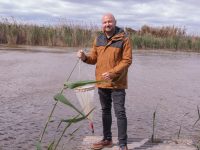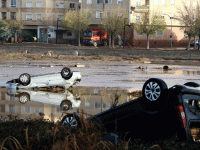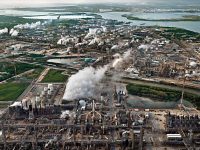Natural spaces, the silent victims of the storm
La Albufera and the river Turia have been notably affected by the floods that hit the province of Valencia on 29 October.
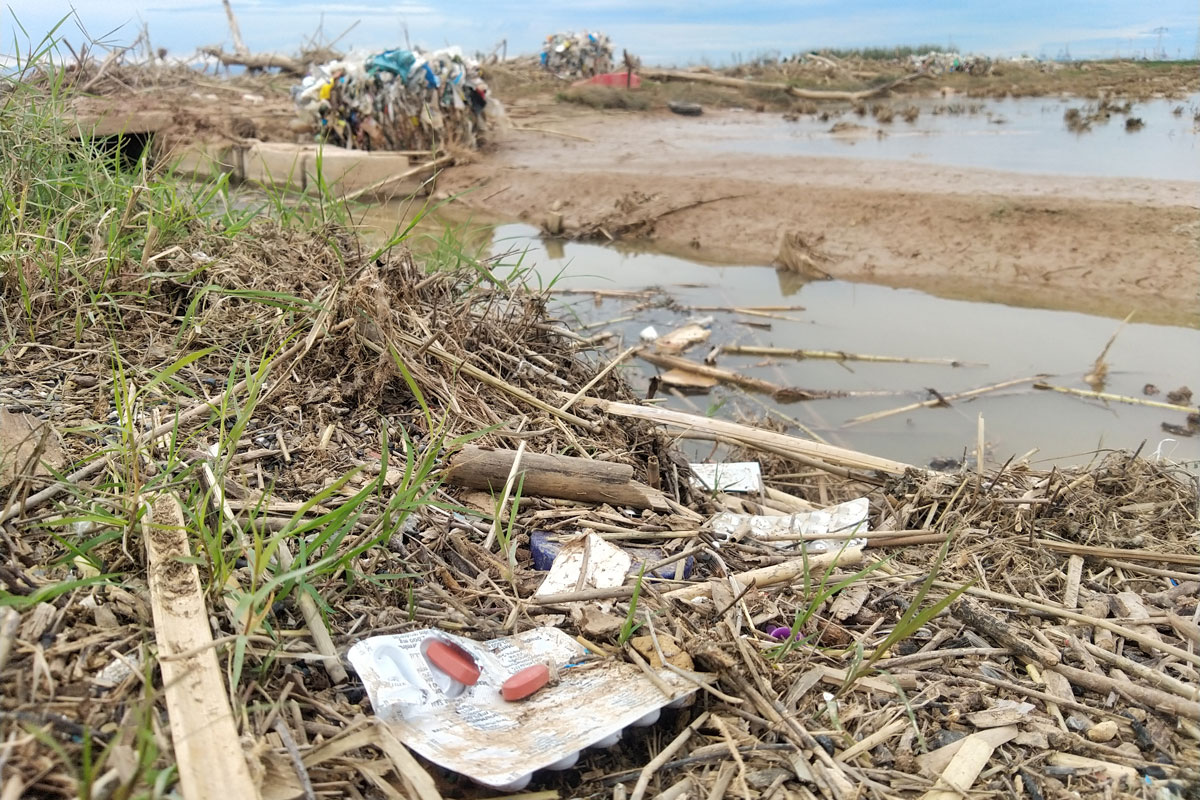
More than 220 people have died and 78 municipalities have been affected by the floods that affected the province of Valencia on the afternoon of Tuesday 29 October. These floods have caused a disaster on many levels, including the environment.
The effects of the downpour have had a significant impact on the province’s natural areas, leaving them in a delicate situation. This circumstance is even worse if we take into account the previous situation of coastal areas or natural parks such as La Albufera, which were undergoing a process of ecosystem conservation and recovery.
More than ever
The Albufera Nature Reserve is probably the most characteristic natural landmark of the Region of Valencia. This natural park was declared a natural park in 1986, and is of great ecological value, as it is home to endangered species such as the Spanish and the Valencia toothcarps. In addition, its large extension (21,120 hectares) provides a key source of sustenance for the rice fields located in and around it.
After the cutoff low of 29th October, La Albufera’s ecosystem has been completely overwhelmed by the large amount of external elements that have arrived from the flooded areas. The Poyo ravine flows directly into this natural space, and as a result, dozens of wrecked cars, toxic materials and a huge amount of plastics, medicines, and all kinds of products from homes and industrial areas have ended up in the natural park – in an area that was already in a delicate situation. Javi Jiménez Romo, biologist and technician at La Albufera, points out that «this is the most serious environmental aggression that La Albufera has suffered since it became a natural park».
Miguel Ángel Gómez-Serrano, professor in the Department of Microbiology and Ecology at the University of Valencia, warns that the consequences of this massive influx of materials are still unknown. «The priority now is the people, towns, and infrastructures affected by the storm, but when normality is restored, priorities will have to be established to restore the affected ecosystems and, in the process, to rethink the management model for this valuable natural area», explains the researcher.
La Albufera was slowly recovering in an environmental process aimed at recovering the water quality it had had in the past. Before the storm, there were already areas of the park where the water quality was not optimal for the development of many local species, and after this natural disaster, La Albufera is in a very delicate situation. Miguel Ángel Gómez-Serrano explains: «We do not know the consequences that the storm may have on this process in the short and medium term, but we do know that long-term aid must be guaranteed if we want the lagoon to one day regain the transparency and life it lost in the 1980s».
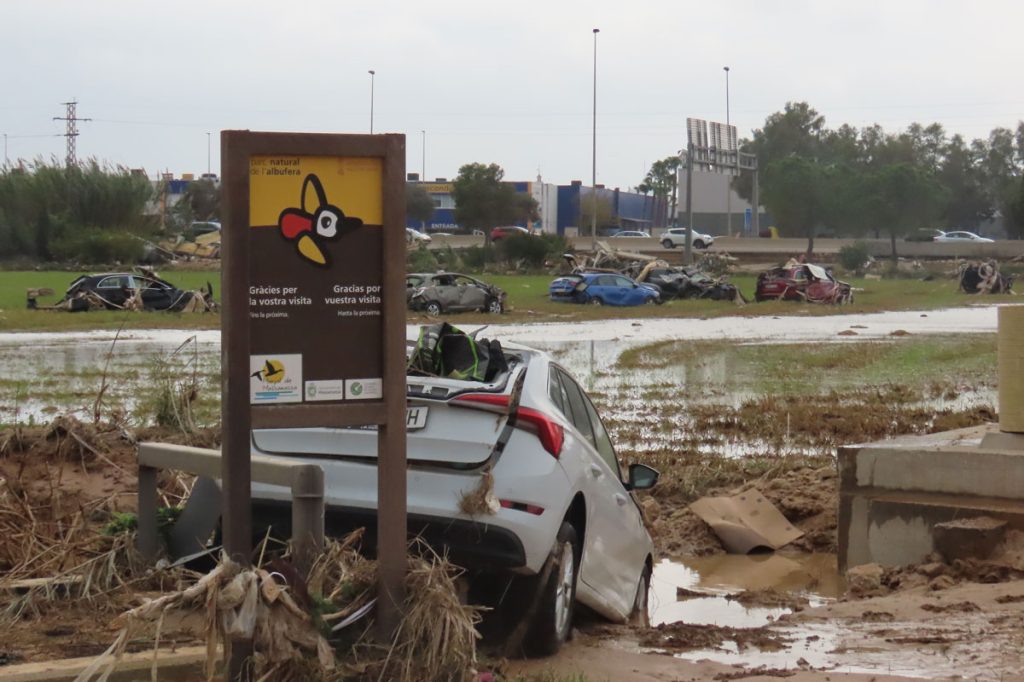
Destroyed cars at La Albufera after the storm. / Photo: Javi Jiménez Romo
Biodiversity is another of the key points when it comes to assessing the effects of the downpour on the area. Despite what it may seem at first glance, many species have the capacity to adapt to the new situations in the lagoon. However, a number of species were already endangered before this event. According to Miguel Ángel Gómez-Serrano, their survival will depend on our response in restoring their habitats. «Let’s hope that politicians do not forget La Albufera, which has shown an extraordinary capacity to prevent even further destruction», adds the scientist. The fact is that towns located on the coastline of the park such as Pinedo and El Saler were not affected by the flooding thanks to the crops surrounding the lagoon, which acted like a sponge and absorbed a large amount of water that would otherwise have reached these towns as well.
The mayor of Valencia, María José Català, spoke on Wednesday about the situation of the natural park: «We must use the disaster as a springboard for change to find a solution for the lagoon. This is the moment to consolidate the work that we have been thinking about for some time, and now, after the storm, this may be the opportunity to provide a definitive solution». Raúl Mérida, director general for the Natural and Animal Environment department of the Regional Government, in statements to SER, said last week that, after the first analyses, «no serious pollutant values have been found» and that, after a first assessment, «there are no major effects on the water». However, she pointed out that the northern and north-eastern area is somewhat more affected.
This clashes head-on with the version put forward by Javi Jiménez: «We have to tackle the problem properly. We are not doing enough. La Albufera was already in bad shape a month ago due to governmental lack of coordination». The biologist harshly criticises a management system that «has been weighing down» the natural park for years, and calls for a coordination centre that involves social actors who care for the park properly. «We need solutions based on nature. We are not going to get out of here if each administration does things its own way. Actions must be depoliticised», he adds. At the same time, he argues that farmers, fishermen, ecologists, and the universities and administrations involved should be engaged in a process of renewal to save the natural park. «We need a change now, more than ever», concludes Javi Jiménez.
The Turia and its riverside forest
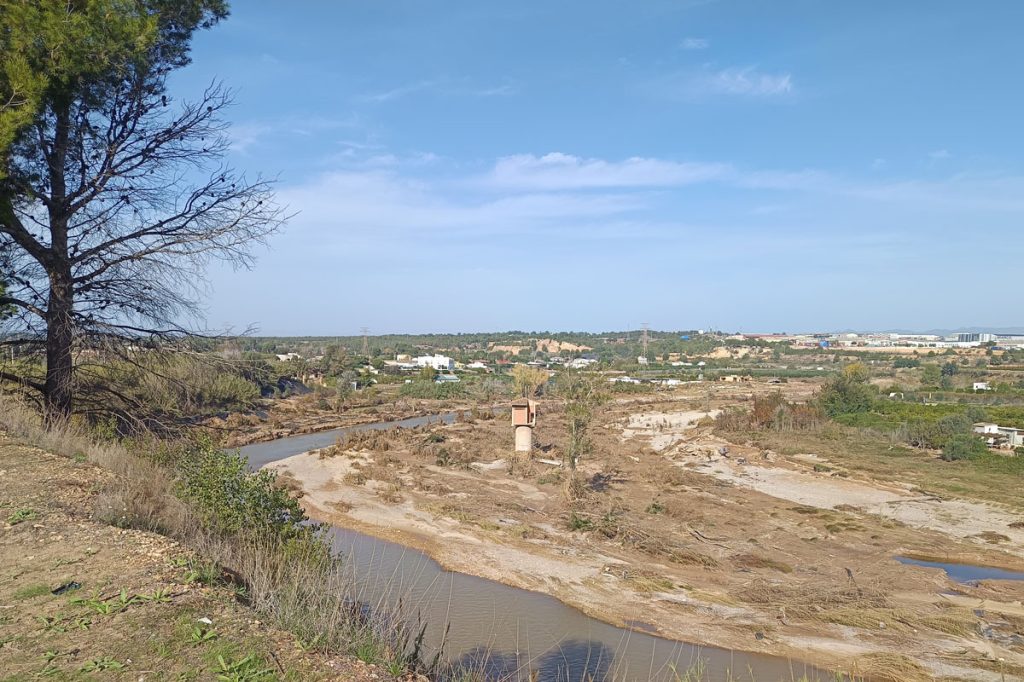
The river Turia as it passes Manises. The effects on the riverbank are visible, as is the disappearance of the interventions to eliminate the common reed that had been carried out in recent years. / Photo: Mètode
The river Turia is another of the natural areas that have been affected by the storm. Although the new riverbed had the capacity to receive all the water that reached it, there were more problems upstream. «The flood affected many areas adjacent to the public hydraulic zones», explains Sales Tomàs, managing director of Fundació Limne, an organisation dedicated to the restoration of rivers, whose headquarters in Quart de Poblet were affected by the flooding. «The riverbed did not have an adequate flood plain area and did not have the capacity to hold as much water because of the occupation of the area. This caused the river to reach a height of up to two and a half metres», explains Tomàs. In addition to the vehicles and uprooted platforms that caused the accumulation of water, the large amount of Arundo donax reeds, an invasive species, caused an even greater problem as it prevented the evacuation of the water and formed a clog that multiplied the level of the flood.
Sales Tomàs stresses the impact that the storm has had on the riverside forests, located at the hydromorphological origin of the river and which are an element of great environmental value. The devastating level of the floods makes it difficult for this riverside woodland to recover quickly from the destruction that the event left in its wake, which inevitably means that the ecosystemic level of the river is irremediably reduced. When asked when the Turia will recover its pre-flooding levels, Sales Tomàs predicts a complicated future for these riverside forests. «Unfortunately, the hydromorphological indicators are slow. It takes between twenty and thirty years for a tree to reach a mature state and therefore have a high hydromorphological index», explains the head of Fundació Limne. «It will take us a long time to recover the image of the river Turia that we had before the storm», she says.
Other areas that were affected were the coasts of the province of Valencia, which received a large amount of waste material from the rivers Turia and Magro and La Albufera. Reeds, infrastructure remains or harmful components such as bleach and fuels reached the Mediterranean Sea and left a desolate scene. The damage has been so extensive that a full assessment has yet to be made of the damage caused by the storm in many of the beach areas, both on the surface and in the sea.
Climate change in the spotlight
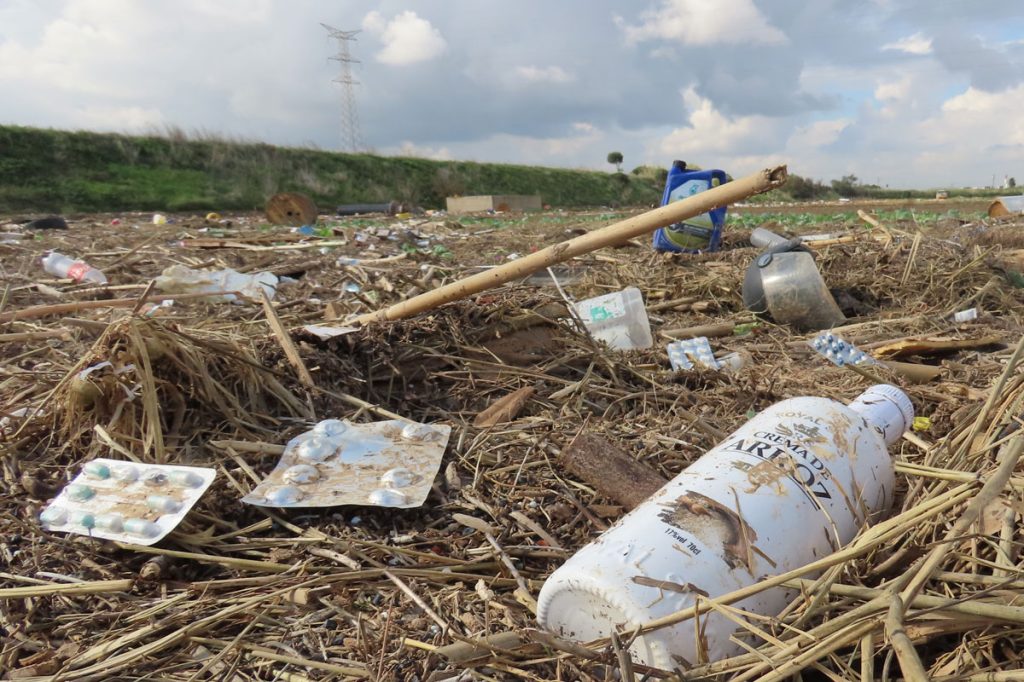
Drugs and other waste products in La Albufera de València after the storm. / Photograph: Javi Jiménez Romo
Faced with this extremely fragile situation for natural areas in the province, effective and early action is needed to mitigate the consequences of flooding. «We must put an end to the tendency to minimise the problem», insists Javi Jiménez. «Institutions are overestimating their individual capacities and we are not up to the task of what we are going through».
All indications are that climate change will bring more of these weather phenomena in the coming years. A study by ClimaMeter shows that the cutoff lows that usually occur in this area of the Mediterranean during this time of the year have become 15% wetter. This is caused by a notable increase in average temperatures and therefore in the temperature of the sea, which evaporates and, on contact with the cold air, causes more aggressive rainfall and, ultimately, a greater risk of flooding, such as the one that took place a month ago. «All that we are experiencing now is a human tragedy derived from ignoring climate change», concludes the biologist.
Updated 28/11/2024, 07:44

